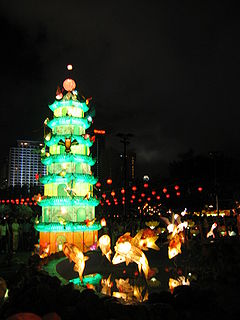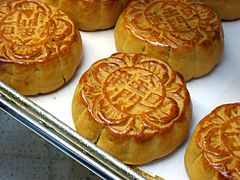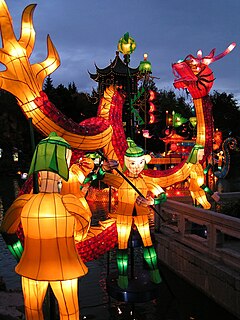
 Bài mới
Bài mới  Thành viên
Thành viên  Lịch
Lịch  Tìm kiếm
Tìm kiếm  |
 Bài mới Bài mới  Thành viên Thành viên  Lịch Lịch  Tìm kiếm Tìm kiếm |
| |
| Lịch Sử - Nhân Văn | |
| |
  |
| Người gởi | Nội dung | ||||||||||||||||||||||||||||||||||||||||||||||||||
|
mykieu
Senior Member 
Tham gia ngày: 10/Jun/2009 Thành viên: OffLine Số bài: 3471 |
  Chủ đề: M·ª™NG TRUNG THU 2010 Chủ đề: M·ª™NG TRUNG THU 2010Gởi ngày: 21/Sep/2010 lúc 10:10am |
||||||||||||||||||||||||||||||||||||||||||||||||||
|
MỪNG TRUNG THU 2010
Việt Nam đang tối 14 tháng 8 AL ( 10:10 PM )
Ng√Ýy mai, r·∫±m th√°ng 8 : Trung Thu !
Th√¢n k√≠nh ch√∫c Qu√Ω Th√Ýnh Vi√™n Di·ªÖn ƒê√Ýn gocong.com h∆∞·ªüng m·ªôt Trung Thu 2010 th·∫≠t vui v√Ý ·∫•m √°p b√™n Gia ƒê√¨nh & Th√¢n H·ªØu .
Buổi trưa
Bánh giá Gò Công
 3 loại mắm:
c√≤ng, t√¥m ch√Ý , ru·ªëc (G√≤ C√¥ng)
  
Buổi tối
Bánh bía Gò Công
  Tr√Ý sen
  Chỉnh sửa lại bởi mykieu - 22/Sep/2010 lúc 10:22am |
|||||||||||||||||||||||||||||||||||||||||||||||||||
|
mk
|
|||||||||||||||||||||||||||||||||||||||||||||||||||
 IP Logged IP Logged |
|||||||||||||||||||||||||||||||||||||||||||||||||||
|
lo cong
Senior Member 
Tham gia ngày: 30/Oct/2007 Đến từ: Canada Thành viên: OffLine Số bài: 2596 |
  Gởi ngày: 21/Sep/2010 lúc 2:31pm Gởi ngày: 21/Sep/2010 lúc 2:31pm |
||||||||||||||||||||||||||||||||||||||||||||||||||
|
M·ªùi qu√Ω v·ªã ƒë·ªçc m·ªôt b√Ýi v·ªÅ T·∫øt Trung Thu
All About Tet Trung Thu, the Mid-Autumn Moon FestivalBy Erin Henderson History and celebration of Tet Trung Thu, the Vietnamese Mid-Autumn Moon Festival. Tet Trung Thu, as it is known in Vietnam, or the Mid-Autumn Moon Festival as we refer to it in America, is a wonderful, ancient festival that revolves around children. It is said that originally, the Mid-Autumn Moon Festival came about as a way for parents to make up for lost time with their children after harvest season. The harvest was done by September, (August in the Lunar calendar) and the parents were anxious to spend time with their children and do something special with them, as well as celebrate the harvest, after spending much time working hard and away from the family. It was held under the full moon, which represents fullness and prosperity of life. Tet Trung Thu is very much like a combination of our Halloween and Thanksgiving. Children parade on the streets, while singing and carrying colorful lanterns of different sizes. Some of the popular shapes include fishes, stars, butterflies and a lantern that spins when a candle is inserted, representing the earth circling the sun. Dances are also traditional, and include the dragon dance and the flower dance. It is customary to give Banh Trung Thu, boxes of moon cakes, which are traditionally very rich in taste. The cakes are filled with lotus seeds, ground beans and orange peels and have a bright yoke in the center to represent the moon. Today, the Mid-Autumn Moon Festival, as well as encouraging affection for children, promotes education, poetry, dance and arts and crafts. Many Vietnamese communities in the USA hold Mid-Autumn Moon Festivals, including Washington DC and San Jose. For families that don't live in an area with an organized Tet Trung Thu Festival, have your own! It is a wonderful opportunity to share and learn about your child's culture, and a great opportunity for family fun too! To help children get ready for the Mid-Autumn Moon Festival, parents can help children make their lanterns and costumes for the lantern procession and discuss the history and culture of Vietnam. Showing our love for our children and teaching of Vietnam's love for their children is a wonderful reason to celebrate! |
|||||||||||||||||||||||||||||||||||||||||||||||||||
|
Lộ Công Mười Lăm
|
|||||||||||||||||||||||||||||||||||||||||||||||||||
 IP Logged IP Logged |
|||||||||||||||||||||||||||||||||||||||||||||||||||
|
lo cong
Senior Member 
Tham gia ngày: 30/Oct/2007 Đến từ: Canada Thành viên: OffLine Số bài: 2596 |
  Gởi ngày: 21/Sep/2010 lúc 2:36pm Gởi ngày: 21/Sep/2010 lúc 2:36pm |
||||||||||||||||||||||||||||||||||||||||||||||||||
Mid-Autumn FestivalFrom Wikipedia, the free encyclopedia
(Redirected from Tet Trung Thu)
For other harvest festivals that may be known as Mid-Autumn Festival, see Mid-Autumn Festival (disambiguation).

Mid-Autumn Festival celebrations in Victoria Park, Hong Kong 
Mooncakes are often eaten during the festival. 
Mid-Autumn Festival at the Botanical Garden, Montreal The Mid-Autumn Festival, also known as the Moon Festival, Zhongqiu Festival, or in Chinese, Zhongqiujie (traditional Chinese: 中秋節), or in Vietnamese "Tết Trung Thu", is a popular harvest festival celebrated by Chinese, and Vietnamese people, dating back over 3,000 years to moon worship in China's Shang Dynasty. It was first called Zhongqiu Jie (literally "Mid-Autumn Festival") in the Zhou Dynasty.[1] In Malaysia, Singapore, and the Philippines, it is also sometimes referred to as the Lantern Festival or Mooncake Festival. The Mid-Autumn Festival is held on the 15th day of the eighth month in the Chinese calendar, which is usually around late September or early October in the Gregorian calendar. It is a date that parallels the autumnal equinox of the solar calendar, when the moon is supposedly at its fullest and roundest. The traditional food of this festival is the mooncake, of which there are many different varieties. The Mid-Autumn Festival is one of the few most important holidays in the Chinese calendar, the others being Chinese New Year and Winter Solstice, and is a legal holiday in several countries. Farmers celebrate the end of the summer harvesting season on this date. Traditionally on this day, Chinese family members and friends will gather to admire the bright mid-autumn harvest moon, and eat moon cakes and pomelos under the moon together. Accompanying the celebration, there are additional cultural or regional customs, such as:
Shops selling mooncakes before the festival often display pictures of Chang'e floating to the moon.
[edit] Stories of the Mid-Autumn Festival[edit] Houyi and Chang'e
Celebration of the Mid-Autumn Festival is strongly ***ociated with the legend of Houyi and Chang'e, the Moon Goddess of Immortality. Tradition places these two figures from Chinese mythology around 2170 BCE, during the reign of the legendary Emperor Yao, shortly after that of Huangdi. Unlike many lunar deities in other cultures who personify the moon, Chang'e simply lives on the moon but is not the moon per se. There are many variants and adaptations of the legend of Chang'e that frequently contradict each other. However, most versions of the legend involve some variation of the following elements: Houyi, the Archer, an emperor, either benevolent or malevolent, and an elixir of life. One version of the legend states that Houyi was an immortal and Chang'e was a beautiful young girl, working in the palace of the Jade Emperor (the Emperor of Heaven, 玉帝 pinyin:Yùdì) as an attendant to the Queen Mother of the West (the Jade Emperor's wife). Houyi aroused the jealousy of the other immortals, who then slandered him before the Jade Emperor. Houyi and his wife, Chang'e, were subsequently banished from heaven. They were forced to live on Earth. Houyi had to hunt to survive and became a skilled and famous archer. At that time, there were ten suns, in the form of three-legged birds, residing in a mulberry tree in the eastern sea. Each day one of the sun birds would have to travel around the world on a carriage, driven by Xihe, the 'mother' of the suns. One day, all ten of the suns circled together, causing the Earth to burn. Emperor Yao, the Emperor of China, commanded Houyi to use his archery skill to shoot down all but one of the suns. Upon completion of his task, the Emperor rewarded Houyi with a pill that granted eternal life. Emperor Yao advised Houyi not to swallow the pill immediately but instead to prepare himself by praying and fasting for a year before taking it.[4] Houyi took the pill home and hid it under a rafter. One day, Houyi was summoned away again by Emperor Yao. During her husband's absence, Chang'e, noticed a white beam of light beckoning from the rafters, and discovered the pill. Chang'e swallowed it and immediately found that she could fly. Houyi returned home, realizing what had happened he began to reprimand his wife. Chang'e escaped by flying out the window into the sky.[4] Houyi pursued her halfway across the heavens but was forced to return to Earth because of strong winds. Chang'e reached the moon, where she coughed up part of the pill.[4] Chang'e commanded the hare that lived on the moon to make another pill. Chang'e would then be able to return to Earth and her husband. The legend states that the hare is still pounding herbs, trying to make the pill. Houyi built himself a palace in the sun, representing "Yang" (the male principle), in contrast to Chang'e's home on the moon which represents "Yin" (the female principle). Once a year, on the fifteenth day of the full moon, Houyi visits his wife. That is the reason why the moon is very full and beautiful on that night.[4] This description appears in written form in two Western Han dynasty (206 BC-24 AD) collections; Shan Hai Jing, the Cl***ic of the Mountains and Seas and Huainanzi, a philosophical cl***ic.[5] Another version of the legend, similar to the one above, differs in saying that Chang'e swallowed the pill of immortality because Peng, one of Houyi's many apprentice archers, tried to force her to give the pill to him. Knowing that she could not fight off Peng, Chang'e had no choice but to swallow the pill herself. Other versions say that Houyi and Chang'e were still immortals living in heaven at the time that Houyi killed nine of the suns. The sun birds were the sons of the Jade Emperor, who punished Houyi and Chang'e by forcing them to live on Earth as mortals. Seeing that Chang'e felt extremely miserable over her loss of immortality, Houyi decided to find the pill that would restore it. At the end of his quest, he met the Queen Mother of the West, who agreed to give him the pill, but warned him that each person would only need half a pill to regain immortality. Houyi brought the pill home and stored it in a case. He warned Chang'e not to open the case, and then left home for a while. Like Pandora in Greek mythology, Chang'e became curious. She opened up the case and found the pill, just as Houyi was returning home. Nervous that Houyi would catch her, discovering the contents of the case, she accidentally swallowed the entire pill, and started to float into the sky because of the overdose. Some versions of the legend do not refer to Houyi or Chang'e as having previously been immortals and initially present them as mortals instead. There are also versions of the story in which Houyi is rewarded for killing nine of the suns and saving the people by being made king. However, King Houyi became a despot. He gained the pill of immortality, either by stealing it from the Queen Mother of the West or by learning that he could make pills by grinding up the body of an adolescent boy every night for a hundred nights. Chang'e stole the pill and swallowed it herself, either to stop more boys being killed or to prevent her husband's tyrannical rule from lasting forever. [edit] The Hare or The Jade Rabbit
A depiction of Chang'e and the Jade Rabbit According to tradition, the Jade Rabbit pounds medicine, together with the lady, Chang'e, for the gods. Others say that the Jade Rabbit is a shape, ***umed by Chang'e herself. The dark areas to the top of the full moon may be construed as the figure of a rabbit. The animal's ears point to the upper right, while at the left are two large circular areas, representing its head and body.[6] In this legend, three fairy sages transformed themselves into pitiful old men, and begged for food from a fox, a monkey, and a hare. The fox and the monkey both had food to give to the old men, but the hare, empty-handed, jumped into a blazing fire to offer his own flesh instead. The sages were so touched by the hare's sacrifice and act of kindness that they let him live in the Moon Palace, where he became the "Jade Rabbit". [edit] Overthrow of Mongol ruleAccording to a widespread folk tale (not necessarily supported by historical records), the Mid-Autumn Festival commemorates an uprising in China against the Mongol rulers of the Yuan Dynasty (1280–1368) in the 14th century.[7] As group gatherings were banned, it was impossible to make plans for a rebellion.[7] Noting that the Mongols did not eat mooncakes, Liu Bowen (劉伯溫) of Zhejiang Province, advisor to the Chinese rebel leader Zhu Yuanzhang, came up with the idea of timing the rebellion to coincide with the Mid-Autumn Festival. He sought permission to distribute thousands of moon cakes to the Chinese residents in the city to bless the longevity of the Mongol emperor. Inside each cake, however, was inserted a piece of paper with the message: "Kill the Mongols on the 15th day of the 8th month" (traditional Chinese: 八月十五殺韃子; simplified Chinese: 八月十五杀鞑子).[7] On the night of the Moon Festival, the rebels successfully attacked and overthrew the government. What followed was the establishment of the Ming Dynasty (1368–1644), under Zhu. Henceforth, the Mid-Autumn Festival was celebrated with moon cakes on a national level. [edit] Vietnamese versionThe Mid-Autumn festival is named "Tết Trung Thu" in Vietnamese. The Vietnamese version of the holiday recounts the legend of Cuội, whose wife accidentally urinated on a sacred banyan tree, taking him with it to the Moon. Every year, on the mid-autumn festival, children light lanterns and participate in a procession to show Cuội the way to Earth.[8] In Vietnam, Mooncakes are typically square rather than round, though round ones do exist. Besides the indigenous tale of the banyan tree, other legends are widely told including the story of the Moon Lady, and the story of the carp who wanted to become a dragon.[8] One important event before and during Vietnamese Mid-Autumn Festival are lion dances. The dances are performed by both non-professional children group and trained professional groups. Lion dance groups perform on the streets go to houses asking for permission to perform for them. If accepted by the host, "the lion" will come in and start dancing as a wish of luck and fortune  and the host gives back lucky money to show thankfulness. [edit] DatesThe moon festival will occur on these days in coming years:[9]
|
|||||||||||||||||||||||||||||||||||||||||||||||||||
|
Lộ Công Mười Lăm
|
|||||||||||||||||||||||||||||||||||||||||||||||||||
 IP Logged IP Logged |
|||||||||||||||||||||||||||||||||||||||||||||||||||
  |
||
Chuyển nhanh đến |
Bạn không được quyền gởi bài mới Bạn không được quyền gởi bài trả lời Bạn không được quyền xoá bài gởi Bạn không được quyền sửa lại bài Bạn không được quyền tạo điểm đề tài Bạn không được quyền cho điểm đề tài |
|